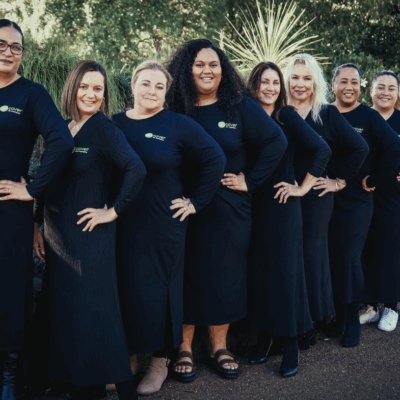Fieldays report shows value of the brand
The Fieldays 2016 Economic Impact Report, independently prepared by consulting economist Dr Warren Hughes and the University of Waikato Management School’s Institute of Business Research, was recently released at a […]
The Fieldays 2016 Economic Impact Report, independently prepared by consulting economist Dr Warren Hughes and the University of Waikato Management School’s Institute of Business Research, was recently released at a function at the Mystery Creek Events Centre.
Photo: (L-R) Peter Nation, Nathan Guy, Frank Scrimgeour and Warren Hughes.
The Minister of Primary Industries, Hon. Nathan Guy, spoke at the event, along with NZ National Fieldays Society CEO Peter Nation and University of Waikato economics professor Frank Scrimgeour.
“I am delighted with the report,” said NZ National Fieldays Society CEO Peter Nation. “This report further reinforces the massive economic contribution to Waikato and New Zealand.”
The report found that Fieldays 2016, which ran from June 15 to 18, generated $430 million in sales revenue for New Zealand firms, up nine percent from 2015. Of that, $124.5 million in revenue was generated for firms in the Waikato region.
The impact to GDP was calculated at $58 million for the Waikato and $191 million for all of New Zealand.
“Fieldays is a fantastic event that keeps going from strength to strength,” said Nathan Guy. “It has provided a wonderful opportunity to get rural and urban people understanding what happens when you go beyond the farm gate or orchard gate.
“One of the highlights of the report is that, despite the downturn in dairying, the results were better than expected,” said Dr Warren Hughes, the report’s author. “The number of exhibitor sites went up four percent to 1507, and the number of gate entries also increased to 130,684, about four percent higher than 2015.”
It was found that for every visitor through the gate, the 2016 Fieldays generated $3,300 in sales revenue for New Zealand firms including machinery and equipment sales.
In total, 60 percent of Fieldays visitors purchased or planned to purchase equipment this year, compared to 53 per cent in 2015.
Fieldays helped generate 708 (full-time equivalent) new jobs for the Waikato, and a total of 2021 new jobs across all of New Zealand for 2016 (up 13 percent since last year).
“It’s not only about the goods and services sold during and after the event,” said Nation. “It’s about the jobs created and the surrounding towns and cities that benefit hugely during Fieldays, as well as pre and post-event.”
Brand estimated at $380 million
This year, for the first time, economists were asked to put a value on the Fieldays brand. Dr Hughes estimated it to be $380 million – very high for a New Zealand-based brand. He said Fieldays had a valuable brand identity which offered something positive and valuable to sponsors and exhibitors.
Nation said that reinforced what is already known from travelling around the world and visiting other agricultural shows. “The Fieldays brand is recognised both internationally and nationally as a world-class event.”
The report said Fieldays was without peer as a platform for demonstrating New Zealand’s agricultural expertise and world leadership in key areas, as well as acquainting grass roots farmer and growers with the latest productivity enhancing equipment and techniques.
Dr Hughes said the Fieldays brand was “in a class of its own” compared with other regional events and “unique in this part of the world”. However, he felt that the Government could do more to support Fieldays – including supporting roading and infrastructure, and in publicising the event internationally.
Waikato impact
Although overall revenue for all New Zealand firms increased from $396 million in 2015 to $430 million in 2016, the Waikato region was slightly down, likely due to the then subdued dairy prices. Overall revenue for the Waikato region decreased by 13 percent from $143 million in 2015 to $124.5 million in 2016 and equipment sales for Waikato firms at Fieldays dropped nine percent from $75 million in 2015 to $68 million this year.
Nation thinks the environment in June may have meant more day-trippers to Fieldays this year. In the hospitality and accommodation sector, average visitor spending dropped from $303 in 2015 to $208 this year.
“I think that is understandable, given the current environment, that people might be coming for one day rather than staying over.”
But he said Fieldays exhibitors contributed hugely to the regional economy. “Each year a mini-city moves in for Fieldays, and it takes a mini-city to build it and then break it down,” said Nation. “This year exhibitors brought about 10,000 staff to Fieldays. They needed somewhere to sleep and eat, they needed groceries from local supermarkets and timber and supplies for their sites from local stores – so the impact goes beyond sales on site.”
Still spending
Nation said people spent money at Fieldays this year, but not necessarily on large capital items.
“We’ve had some exhibitors tell us they had record sales this year. In terms of quad bikes, trucks, cars, Utes and clothing – all of those things were strong this year. When it comes to the larger investments, the spend would appear subdued. However, everyday items and essential items were a different story. Farmers are not going to put up with holes in their gumboots or substandard equipment for items that are a necessity to their business. But there were probably fewer new dairy conversions signed up for this year, or dairy platforms purchased.”
Dr Scrimgeour agreed: “It appears that people were more budget conscious, but they weren’t closing their wallets completely.”
New year’s Fieldays will be from 14 to 17 June 2017. For more information visit www.fieldays.co.nz






